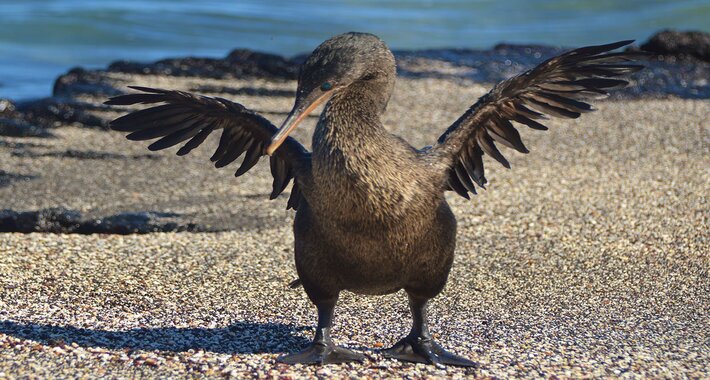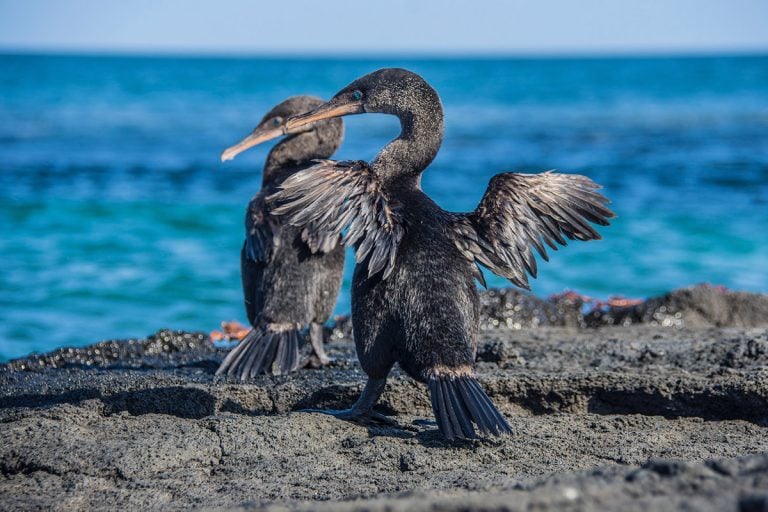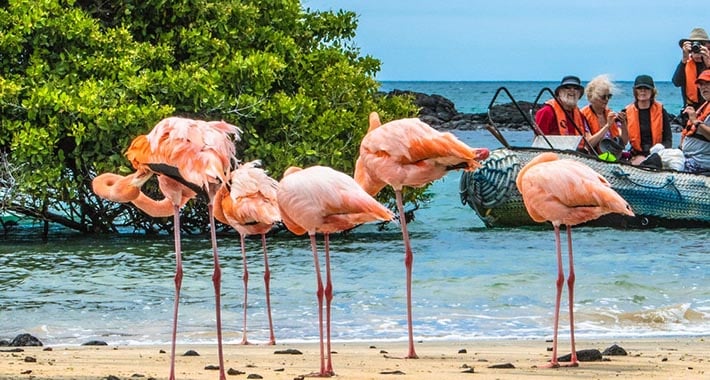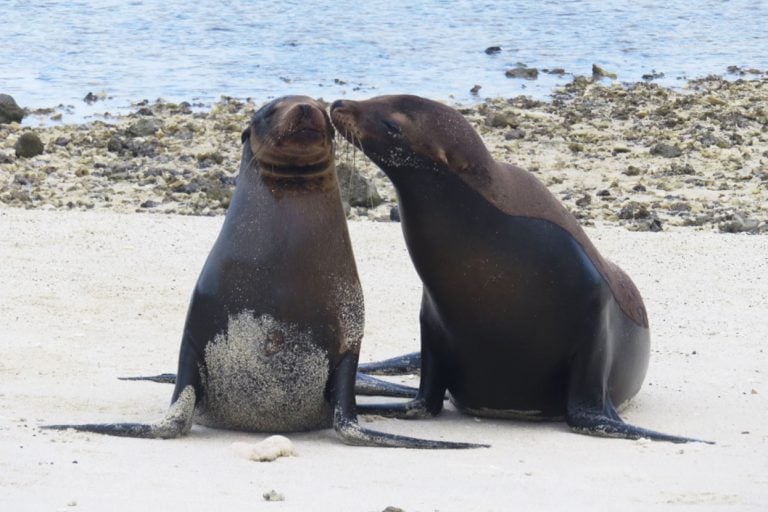Flightless Cormorant Courtship & Nesting Habits as Attractive Factors

Unable to demonstrate flight, an odd set of wings flail wildly in the air, releasing golden droplets of water into the deep blue sky above the setting sun. One of the more amazing evolutionary views that visitors to the enchanted isles get to witness is the Flightless Cormorant, an indigenous species of the Galapagos Islands that only has two places in the world: Fernandina and the western coast of Isabela. Their surviving wings are only a visual reminder of something that formerly had a more aerial function, and their offspring are merely an extension of that same reminder. The flightless cormorant follows a pretty complicated set of actions and rituals that contribute to its fascinating mystery in order to preserve its unique species.
Onboard Yacht La Pinta, you may see the unusual and stunning Flightless Cormorant while visiting the Galapagos Islands!
Reciprocity for reproduction 
Flightless cormorant
Reproductive habits are crucial for the survival of this rare species, as they lost a significant portion of their population during the El Niño phenomena in 1983, which decreased the population to 400 individuals. It’s actually the only thing required to keep the population steady.
Flightless Cormorant Courtship Phase
Male and female birds bend their necks into a more flattened “s-like” shape as they weave alongside one another for the majority of the courtship ritual, which takes place in the water. Following the gambit’s approval, the two head onto land and work together to build a nest not too far from the coast, using seaweed and whatever other detritus they may discover. Frequently, the male will deliver little “gifts” to the female, which are subsequently placed within the seaweed nest. These presents may be anything from driftwood fragments to beer tops.
Nesting Patterns
Due in major part to the lowest sea surface temperatures and an abundance of marine food, both individuals’ nesting habits often begin between April and October. Reduced heat stress risk for the newborn chicks is another benefit of cooler land temperatures.

One of the most unique species found in the Galapagos Islands is the flightless cormorant
In the end, females deposit three eggs on average each clutch. Even though the incubation period is equally divided between the male and female, it is typical for only one egg to hatch at the conclusion of that time. The work of feeding and shielding the chicks from exposure and predators is shared by both male and female parents until the chicks can be left totally independent, which takes an average of seventy days. It’s interesting to observe that, in situations where food is plentiful, the female will abandon her chick and give the male full parental responsibility. As a result, she is free to go on and form a new relationship with a different man. Although it is conceivable for a female to produce multiple broods in a single season, this is a relatively uncommon occurrence as there is rarely enough food to support such a phenomena. With a 90% yearly survival rate, both sexes have an average life expectancy of almost 13 years.
RELATED STORIES

What are the best birds to see in the Galapagos?

Six Stunning Ways Galapagos Island Animal Mothers Nurture Their Young

Guy Fawkes on the Galapagos Islands: Never forget the November “Finch”…

A Unique 6-Day Insular Inspiration Session with Charles Darwin on Santiago Island!
